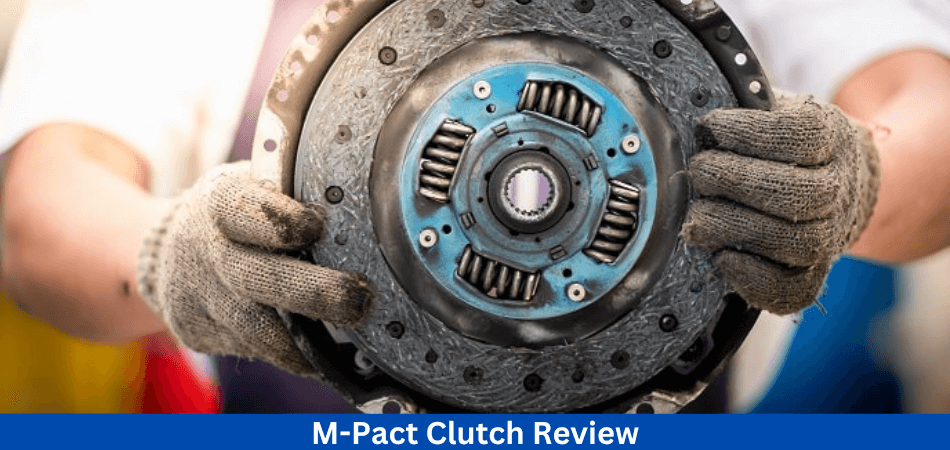
If you want to enhance the performance of your car, you might want to consider upgrading your clutch. M-Pact Clutches are highly reliable clutches that provide a range of benefits for car enthusiasts. High-performance clutches like the M-Pact handle more power than standard clutches.
These high-quality materials can be used under a variety of conditions and are capable of withstanding high-speed driving conditions. So let’s have a look at the “M-Pact Clutch Review”
Throughout this M-Pact Clutch Review, we’ll explore the features, pros, and cons of this product to help you decide whether it’s right for you.
What’s A Clutch?
A clutch in an automotive vehicle is essentially an on-demand coupling that mates the engine with the transmission until a gear change is initiated by pressing the clutch pedal.
Whenever you depress the clutch pedal, you are cutting the engine power from flowing through the transmission for a moment. Upon releasing the clutch pedal, the engine and gearbox are once again linked.
A clutch is necessary because internal combustion engines operate efficiently only within a narrow band of engine speed which is known as the power band, which is why cars need a transmission.
Your transmission uses different gears to route power through that powerband at various speeds. In response to your need for speed, the transmission can shift between gears, stepping up or down engine power. Read more here.
What Does the Clutch Do?
Your car’s clutch connects two rotating shafts, allowing three functions.
- In order for the shafts to spin at the same speed, they lock together
- When the pedal is partially depressed, the shafts slip by a controlled amount
- The shafts can also be decoupled so they spin at different speeds.
The wheels don’t turn all the time, but your engine does. Separating the two is necessary for speeding up, slowing down, or stopping without killing the engine.
When your car is moving, your clutch engages. Through a diaphragm spring, the pressure plate exerts a constant force on the driven plate, locking it in place. The clutch disengages when you depress the pedal.
A release bearing pushes against the diaphragm spring’s center, releasing the clamping pressure from the pressure plate. By doing this, you can change gears without allowing the engine’s power to reach the wheels.
Transmission re-engaged when the pedal released. As a result, the friction linings of the driven plate take over the drive once again.
How Many Clutch Parts Are There?
Combined, there are five clutch parts that make up the clutch plate. Additionally, the clutch is closely related to the transmission and the flywheel.
Cover Plate
Flywheels attached to metal housings that connect them to clutch assemblies. Through the clutch disc, engine torque transferred to the gear shaft.
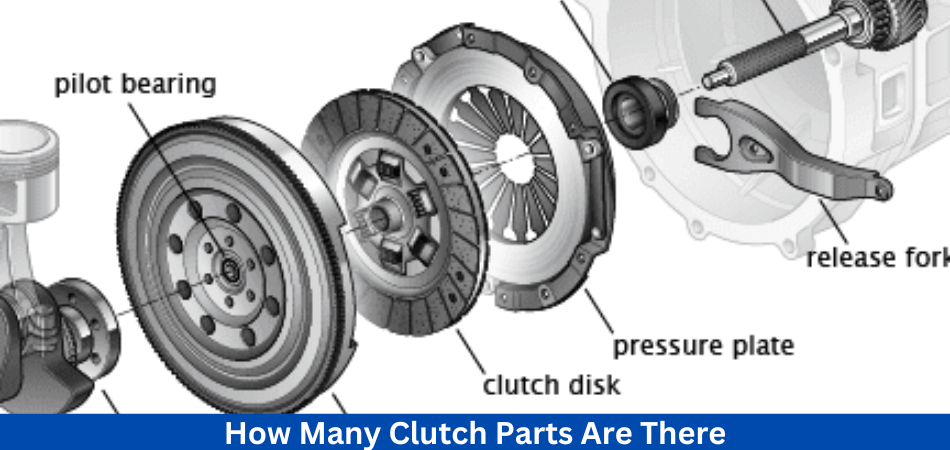
Driven Plate
The friction plate located between the pressure plate and the flywheel on a splined shaft. In a similar way to brake pads, it transmits power to the gearbox. The clutch can slip if these linings wear down too much, preventing it from re-engaging.
Pressure Plate
While the transmission engaged, this large ring applies pressure to the clutch plate. As a result, torque transferred from the engine to the transmission, keeping you moving smoothly.
Diaphragm Springs
In the clutch cover, you will find a large, round spring steel disc. When you depress the clutch pedal, the outer edge touches the pressure plate’s back, releasing the clamping pressure. During this process, the transmission disconnected from the wheels.
Release Bearing
This reduces friction between the pressure plate and release fork when it installed between the pressure plate and the clutch bearing. The release bearing slides along the transmission sleeve as the fork moves side to side.
What are the Types of Clutches?
1. Friction Clutch:
In passenger cars, this type of clutch is most common. It is composed of a single friction plate sandwiched between the flywheel and the pressure plate. The clutch pedal releases the friction plate from the flywheel, which allows the transmission to shift gears.
2. Centrifugal Clutch:
As engine speed increases, centrifugal clutches engage automatically, typically found on go-karts and lawn mowers. It is not necessary to use a pedal or lever to operate them.
3. Cone Clutch:
A cone clutch engages using friction surfaces that are conical in shape. They are often found in older vehicles and in some industrial settings.
4. Electromagnetic Clutch:
An electromagnetic coil engages and disengages these clutches. Often, they used in air conditioning compressors, power take-off units, and other applications that require remote or automatic control.
5. Hydraulic Clutch:
A hydraulic clutch transmits force from the clutch pedal to the clutch mechanism with the aid of hydraulic fluid. This type of engagement known for its smoothness and consistency. It is common for modern cars to use hydraulic clutches.
6. Dog Clutch:
In motorcycles and some sports cars, dog clutches are commonly used in manual transmissions. This type of gear has toothed gears that engage directly, allowing fast and precise shifting.
7. Semi-Automatic Clutch:
These systems combine the convenience of automatic transmissions with manual controls and are also called automated manual transmissions (AMTs). To shift gears, they use a computer-controlled clutch instead of a clutch pedal.
8. Dual-Clutch Transmission (DCT):
The DCT uses two clutches to handle odd and even gears separately. Often used in high-performance and modern sports cars, this enables extremely fast and smooth gear changes.
What is the M-Pact Clutch?
M-Pact Clutches are high-performance clutches that handle higher power than standard clutches. Designed to withstand high-speed driving conditions, it made from high-quality materials and can be used under a variety of conditions. With its unique design, the clutch provides increased grip and reduces the risk of slipping.
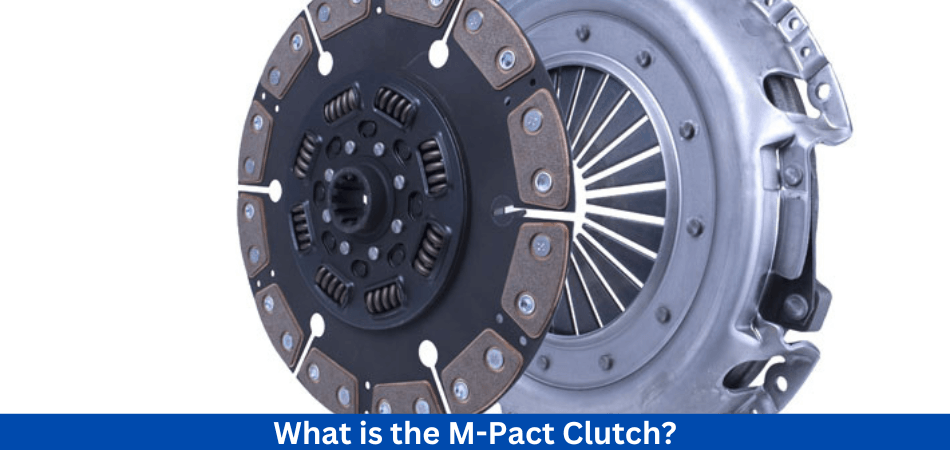
M-Pact Clutches transfer power from the engine to the transmission. In order to accomplish this, a clutch pedal to compress a set of plates. It helps to increase acceleration and top speed by transmitting engine power to the wheels.
M-Pact Clutch Review is very good compared to its competitors. But is it worth the money? Let’s find out.
What are the Specifications of the M-Pact Clutch?
- Quality, performance, and reliability are all hallmarks of the M-Pact stock replacement clutch kit. The clutch kits made up of matched components that result in a smoother, more consistent engagement.
- Unlike other clutch kits, M-Pact kits include a cover and disc assembly made of premium quality materials, a release bearing, a pilot bearing/bushing (if necessary), an alignment tool, and a lubricant.
- The M-Pact replacement kits built to perform and deliver quality. With a clutch kit, you get a smoother, more consistent engagement resulting from matched components.
- The part conforms to OEM specifications
- It includes a premium pressure plate, six-puck ceramic clutch plate, release bearing, top bearing/top bushing, alignment pin, and grease.
- Splines on clutch discs vary from model to model
- The diameter of clutch discs varies between models
What are the Types of M-Pact Upgrade Clutch Kit?
1 M-Pact ST1 Upgrade Clutch Kit
M-Pact ST1 Upgrade Clutch Kit features a high-torque steel back friction disc and matched pressure plate. Through the riveting of “steel to steel,” Some provide additional clamping force and superior burst strength.
With the reinforced steel backing, heat dissipated more efficiently, resulting in longer wear and quicker recovery.
High-torque M-Pact ST1 discs engineered with precision engineered components that provide increased horsepower. To ensure maximum strength and reliability, each disc equipped with a thicker retainer stamping and an increased hardness hub.
This assembly utilizes six inner and six outer heavy duty torsional dampening springs to minimize the shock of engagement. For stock or mildly modified applications, the M-Pact1 Clutch Kit Upgrade designed.
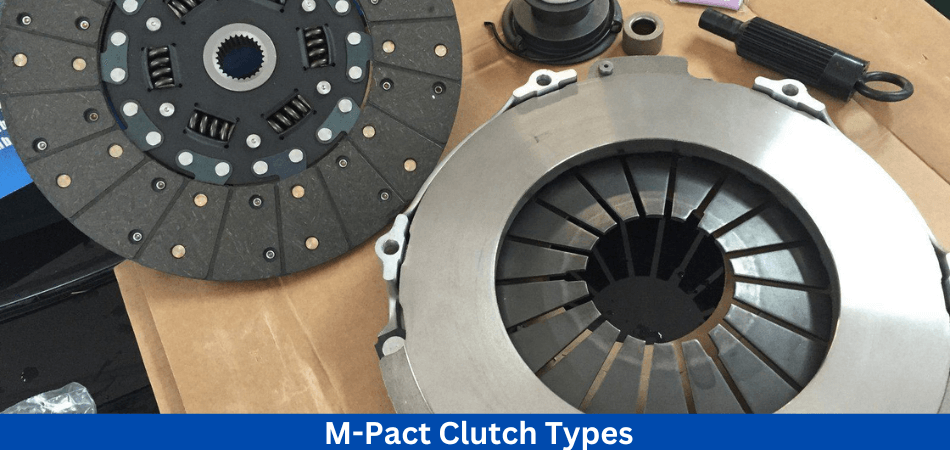
Features:
- An OE-quality pressure plate
- Assemblies with high-torque sprung hubs and discs
- Ceramic segmented friction with steel backing
2. M-Pact ST1.5 Upgrade Clutch Kit
Using a heavy-duty multi-fiction clutch disc, the M-Pact ST1.5 Upgrade Clutch Kit uses a matched pressure plate. Two different friction materials incorporated into the ST1.5 disc to maximize performance and drivability.
The flywheel side lined with steel to provide smooth engagement and reduce flywheel surface wear. Steel back lining provides better heat dissipation and increased burst strength.
The ST1.5 disc features segmented sintered ceramic facings on the pressure plate side. In this way, a ceramic facing friction material can found to deliver maximum holding, while at the same time a disc marcel produces a smoother engagement.
The precision-matched cover and disc combination provides improved holding capacity and drivability while offering street performance. Designed for moderately modified cars or simply aggressive people with stock power, the ST1.5 Clutch Kit Upgrade is the perfect upgrade for your car. Up to 40 percent more torque is available with this upgrade kit, while maintaining a stock pedal feel.
Features:
- Pressure plate of OE quality
- Assemblies with high torque sprung hubs and discs
- Ceramic segmented friction with steel backing
3. M-Pact ST2 Upgrade Clutch Kit
A matched pressure plate and a heavy-duty ceramic button clutch disc used in the M-Pact ST2 Upgrade Clutch Kit. ST2 discs lined exclusively with Carlisle (Wellman) sintered buttons. There are few companies in the world that can compete with Carlisle’s sintered friction technology and clutch buttons.
A number of precision-engineered components re used in the assembly of our ST2 high-torque discs, which designed for applications requiring increased horsepower. Strength and reliability enhanced by thicker retainer stampings and hardened hubs. The ST2 disc features a partially closed spring window that provides additional spring support and protection.
The sprung assembly construction dampens torsion vibrations for smooth engagement and operation. Most street performance enthusiasts will satisfied with the slightly aggressive engagement provided by the ceramic buttons on the ST2 clutch disc.
Modified vehicles or aggressive individuals with stock power can benefit from the M-Pact ST2 Clutch Kit Upgrade. It increases torque capacity by up to 25-50% while maintaining a stock pedal feel.
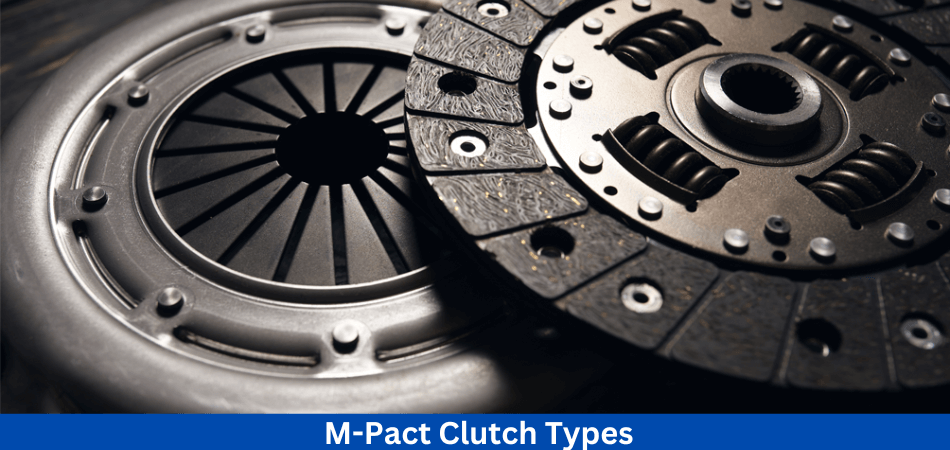
Features:
- A pressure plate of OE quality
- Assemblies with sprung hubs and discs that provide high torque
- Puck friction created by ceramics
What are the Pros of the M-Pact Clutch?
- M-Pact Clutch’s design allows it to handle more power than a standard clutch, which can improve the performance of your car.
- A high-quality clutch is more durable than a regular clutch because it made from high-quality materials.
- It offers increased grip and reduces the risk of slipping or burning thanks to its unique design. As a result, the driving experience becomes smoother and more enjoyable.
- Suitable for a variety of vehicles, the M-Pact Clutch can used in a range of driving conditions.
What are the Cons of the M-Pact Clutch?
Although M-Pact Clutch Review is quite good it still has some disadvantages, such as-
- It may not be affordable for everyone to purchase the M-Pact Clutch since it costs more than a standard clutch.
- The M-Pact Clutch has been reported to be noisy when engaged and disengaged by some users.
- M-Pact Clutch installation can be complex and may require professional assistance.
How Long Does A M-Pact Clutch Last?
In spite of the fact that these couplings are pretty hardy, smoking a clutch will reduce its lifespan. Even those who glued to the third pedal during easy cruising might see total failure within 20,000 or 30,000 miles of driving.
When the clutch fails completely, you won’t be able to operate your car, but there are warning signs before that. If the clutch doesn’t seem to clamp firmly against the flywheel at first, you may notice slippage.
When the clutch fails, you can expect symptoms such as laggy acceleration or inconsistent RPMs, even if you’re traveling at a steady speed.
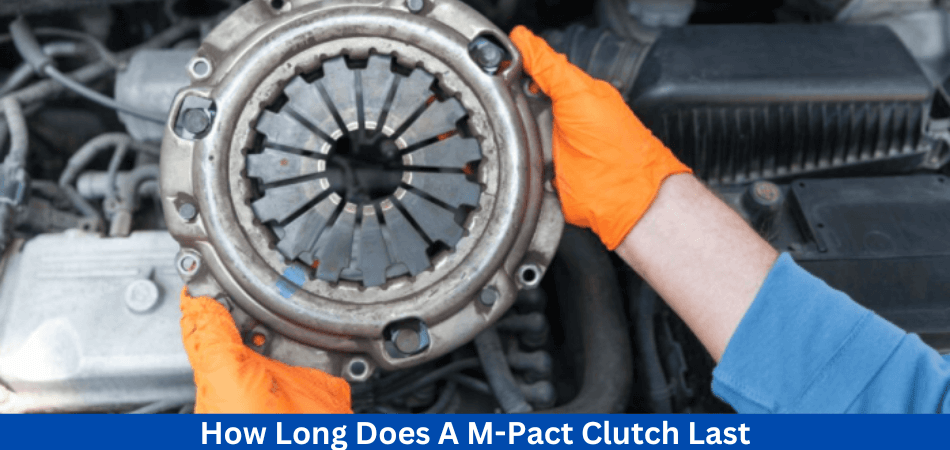
Symptoms of slippage become more apparent as the slippage worsens. It is likely that the clutch pedal will begin acting strangely at some point; it will likely become increasingly spongy in feel, and eventually, you will even notice a different engagement point – when the friction disc touches the flywheel during clutch depressing.
M-Pact Clutch Review is quite good and it lives it reputation. The friction material on the clutch disc will almost completely wear away if you ignore all the symptoms. There are usually two ways in which this manifests itself.
If you’re lucky, the clutch might fail while engaged. Depressing the clutch pedal will not decouple your transmission from the flywheel when this happens. You will have to float shift or shift without a clutch in order to change gears: the car is technically driveable, but changing gears won’t be easy. Unless you have access to a repair shop, you won’t be able to drive anywhere except there.
What are the Common M-Pact Clutch Problems?
Although the M-Pact Clutch Review is good yet it has some problems. It’s possible to get up to 80,000 miles from your clutch, according to AAMCO, but you’ll need to treat it right. The following are some of the most common clutch problems:
Wear: Wearing out your clutch caused by constant friction.
Broken cable: Pushing and pulling the cable requires too much tension.
Leaks: The clutch will not operate properly if the fluid leaks from the cylinders.
Misalignment: When you press the clutch or gas pedal, the wrong amount of force transmitted.
Air in the line: You will not be able to get the pressure in the system to work properly if air gets in the line where fluid needs to be.
Hard clutch: When you have to apply a lot of force to get your clutch to work, this could indicate that there is a problem.
Conclusion: M-Pact Clutch Review
So you have learned about the clutch through this M-Pact Clutch Review. M-Pact Clutches are top-quality products that provide a range of benefits to car enthusiasts. Because it can handle more power than a standard clutch, it is recommended for those who wish to improve their car’s performance.
Also, it offers a smoother engagement than standard clutches, making it a great choice for those who want a better overall driving experience.
Nevertheless, you should consider the cost of the M-Pact Clutch, as well as the potential noise and installation issues. An M-Pact Clutch is definitely worth considering if you are looking for a high-performance clutch.
Read more of our articles here.
FAQs
What types of vehicles are compatible with the M-Pact Clutch?
It can be used in a variety of driving conditions, making it suitable for a wide range of vehicles.
Is it possible to install the M-Pact Clutch myself?
M-Pact Clutch installation can be complex, and it may require professional assistance.
Does the M-Pact Clutch make a lot of noise?
There have been reports that the M-Pact Clutch can be noisy when engaged and disengaged.
What is the price of the M-Pact Clutch?
Compared to a standard clutch, the M-Pact Clutch is more expensive.
For what types of driving conditions is the M-Pact Clutch suitable?
High-speed driving and racing are high-stress driving conditions that the M-Pact Clutch is designed for. Typical driving conditions can also be met with it.
Is the M-Pact Clutch capable of improving fuel efficiency?
M-Pact Clutches are designed to handle more power than standard clutches, but they do not necessarily improve fuel efficiency. Fuel efficiency can be indirectly improved by improving the performance of your car by allowing the engine to work more efficiently.







Leave a Reply